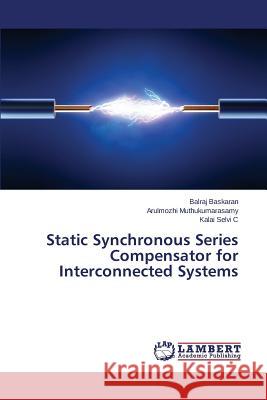Static Synchronous Series Compensator for Interconnected Systems » książka
Static Synchronous Series Compensator for Interconnected Systems
ISBN-13: 9783659775024 / Angielski / Miękka / 2015 / 60 str.
The Static Synchronous Series Compensator (SSSC) is a series device of the Flexible AC Transmission Systems (FACTS) family using power electronics to control power flow and improve power oscillation damping on power grids. The SSSC injects a voltage Vs in series with the transmission line where it is connected. As the SSSC does not use any active power source, the injected voltage must stay in quadrature with line current. By varying the magnitude Vq of the injected voltage in quadrature with current, the SSSC performs the function of a variable reactance compensator, either capacitive or inductive. The variation of injected voltage is performed by means of a Voltage-Sourced Converter (VSC) connected on the secondary side of a coupling transformer. The VSC uses forced-commutated power electronic devices (GTOs, IGBTs or IGCTs) to synthesize a voltage Vconv from a DC voltage source. A capacitor connected on the DC side of the VSC acts as a DC voltage source. A small active power is drawn from the line to keep the capacitor charged and to provide transformer and VSC losses, so that the injected voltage Vs is practically 90 degrees out of phase with current.
The Static Synchronous Series Compensator (SSSC) is a series device of the Flexible AC Transmission Systems (FACTS) family using power electronics to control power flow and improve power oscillation damping on power grids. The SSSC injects a voltage Vs in series with the transmission line where it is connected. As the SSSC does not use any active power source, the injected voltage must stay in quadrature with line current. By varying the magnitude Vq of the injected voltage in quadrature with current, the SSSC performs the function of a variable reactance compensator, either capacitive or inductive. The variation of injected voltage is performed by means of a Voltage-Sourced Converter (VSC) connected on the secondary side of a coupling transformer. The VSC uses forced-commutated power electronic devices (GTOs, IGBTs or IGCTs) to synthesize a voltage Vconv from a DC voltage source. A capacitor connected on the DC side of the VSC acts as a DC voltage source. A small active power is drawn from the line to keep the capacitor charged and to provide transformer and VSC losses, so that the injected voltage Vs is practically 90 degrees out of phase with current.











